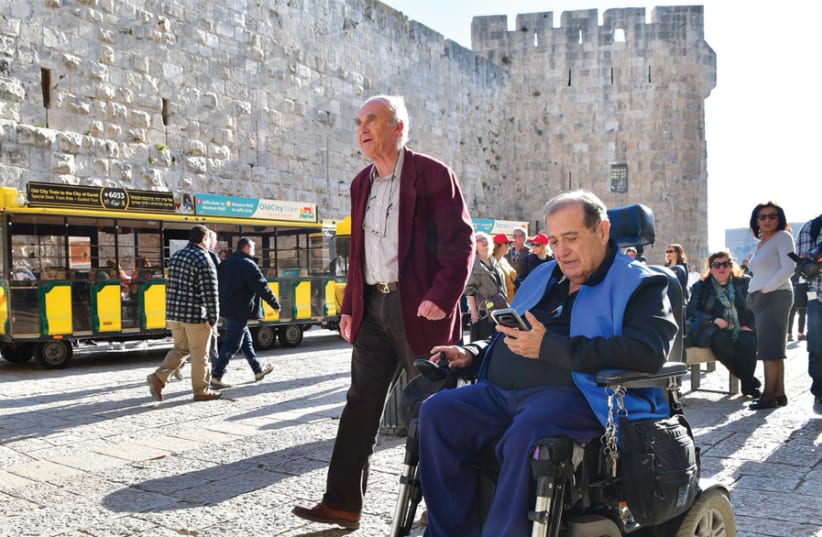With seven agencies, a cost of NIS 20 million, 10 million visitors per year, four quarters, steep elevation differentials and an infrastructure dating to the Roman period in a city classified “World Heritage” by UNESCO, the task to make the Old City of Jerusalem accessible for all disabled residents and visitors is a daunting one.
Despite the challenges and limitations, four kilometers of streets in the Muslim, Armenian and Christian Quarters are now fully accessible.
The decision to make the Old City accessible dates back more than a decade. Dr. Avi Ramot, an international consultant on accessibility from Shekel, a non-profit association for inclusion of the disabled in the city, says, “We soon discovered that there were no standards for this kind of task, since this is the only city in the world with a history spanning more than 3,000 years with residents living in our time. So we had to invent our own standards, which have become a model for others.”
Some 10 years of planning, scheduling and actualization – delayed repeatedly for security reasons – scored a remarkable achievement: a wide range of accessibility solutions inside the Old City for disabled persons and parents with strollers.
The project makes open public spaces accessible according to the type of activity and the intensity of use: tourism and heritage (35% of streets), daily life and residential areas (65%). Design of paving, handrails, benches, garbage cans and more was localized with sensitivity to preservation and the use of natural stone for the ground and walls in order to blend the transition from new to the old and to preserve visual continuity.
The altitude difference between the Old City’s high and low points is about 55 meters. Accessibility to those unable to use the stairs was made possible in part through terraced streets with slopes that enable safe movement with wheelchairs alongside stairs and pedestrianized streets. Factors such as the very non-standard measurements, uneven angles and excavated spaces added to the challenge to maintain professional standards while safeguarding the character and uniqueness of the area.
Key accessible routes are from Zion Gate to the Damascus Gate (the Cardo Route) and from the Jaffa Gate to the New Gate, to the Church of the Holy Sepulcher and the Western Wall Plaza. Partial access has been achieved to David St. and Hashalselet St. Other accessible streets include Khaladia, Saraih, Madrasa, Morristan, Maronites, St. Mark, Ararat, Bikur Cholim, the Searini Monastery, the Archangel and others.
Project funding came from the Jerusalem and Heritage Ministry; the Jerusalem Development Authority; the Tourism Ministry; the Accessibility Department of the Jerusalem Municipality; the National Social Security Agency; and the Israel Antiquities Authority. Work was carried out by the East Jerusalem Development Company.
“Today, I am proud to say that the Old City of Jerusalem is accessible to millions,” said Mayor Moshe Lion at the ceremony held on Monday at the entrance of the project, at Jaffa Gate.
“Old City accessibility is an innovative project that enables the disabled to enjoy the historic and cultural wealth of the city. Among other things, four kilometers of streets in the Muslim, Armenian and Christian quarters were adjusted and about two kilometers of handrails were installed alongside staircases. Accessibility was carried out with the cooperation of the merchants and the residents of the area. For the first time in years, residents of homes within the walls can move around the narrow and steep streets and alleys, significantly improving the quality of life.”
Ramot added, “Few historical cities combine archeological findings, tourist sites and human activities spanning thousands of years. As far as we know, no other historic city that is also defined as a World Heritage City has carried out such a large-scale access project.”
To complement the project, the East Jerusalem Development Company produced a printed accessibility orientation map along with a dedicated application in eight languages enabling real-time navigation through the alleys and sites.
